Moderate overlap front: original test
Rating applies to 2004-11 models built after February 2004
Tested vehicle: 2004 Volvo S40 2.4i 4-door
The Volvo S40 was redesigned during the 2004 model year (the new design entered production in January 2004 and the earlier design, which is classified as a small car, remained in production into February 2004). Note: information about when a specific vehicle was manufactured is on the certification label typically affixed to the car on or near the driver door. To assure that the S40 is the new design, look for vehicles manufactured in March 2004 or later.
The Insurance Institute for Highway Safety has evaluated the crashworthiness of the redesigned 2004 S40 in a 40 mph frontal offset crash test into a deformable barrier.
| Evaluation criteria | Rating |
|---|---|
| Overall evaluation | |
| Structure and safety cage | |
| Driver injury measures | |
| Head/neck | |
| Chest | |
| Leg/foot, left | |
| Leg/foot, right | |
| Driver restraints and dummy kinematics | |
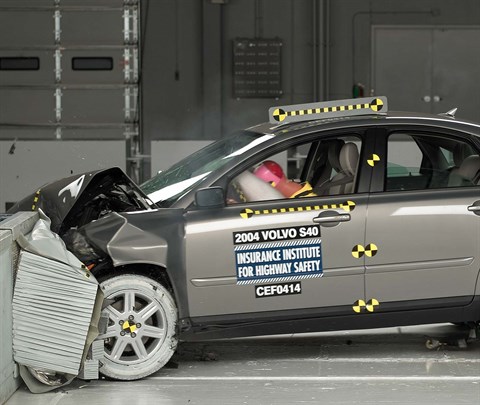
Action shot taken during the frontal offset crash test.

The dummy's position in relation to the steering wheel and instrument panel after the crash test indicates that the driver's survival space was maintained very well.
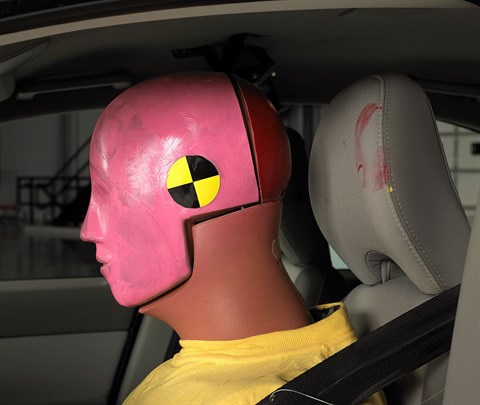
Dummy movement was well controlled. During rebound, the dummy's head hit only the head restraint, as indicated by smeared greasepaint.
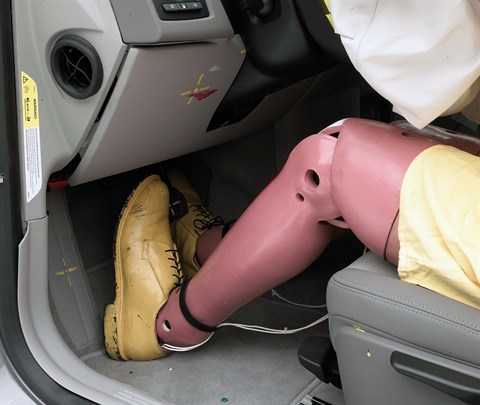
Intrusion into the driver's space was minimal, and all leg and foot injury measures were low.
Rating applies to 2002-04 models built before January 2004
Tested vehicle: 2002 Volvo S40 4-door
The Volvo S40 was introduced in the 2000 model year and structurally modified beginning with 2002 models to improve occupant protection in frontal crashes.
| Evaluation criteria | Rating |
|---|---|
| Overall evaluation | |
| Structure and safety cage | |
| Driver injury measures | |
| Head/neck | |
| Chest | |
| Leg/foot, left | |
| Leg/foot, right | |
| Driver restraints and dummy kinematics Dummy movement was reasonably well controlled. During rebound, the dummy's head tilted outward, brushed the A-pillar, and continued partway out the open side window. | |

Action shot taken during the frontal offset crash test.
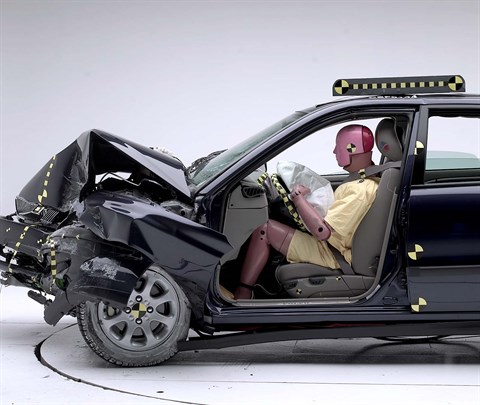
The dummy's position in relation to the steering wheel and instrument panel after the crash test indicates the driver's survival space was maintained well.
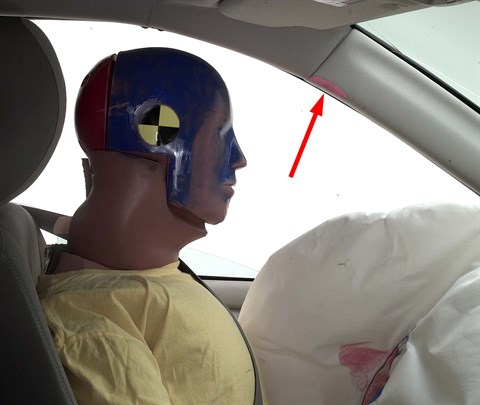
Smeared greasepaint indicates where the dummy's head brushed the A-pillar as it began to rebound from the airbag. Head acceleration from this hit was negligible.

Forces on the lower right leg were high enough to indicate the possibility of injuries.
Roof strength
Rating applies to 2004-11 models built after February 2004
Tested vehicle: 2009 Volvo S40 2.4i 4-door
| Overall evaluation | |
|---|---|
| Curb weight | 3,260 lbs |
| Peak force | 12,786 lbs |
| Strength-to-weight ratio | 3.92 |
Head restraints & seats
Seat type: All seats
| Overall evaluation | |
|---|---|
| Dynamic rating | |
| Seat/head restraint geometry |
About the head restraint & seat test
Currently, IIHS tests apply only to front seats.
